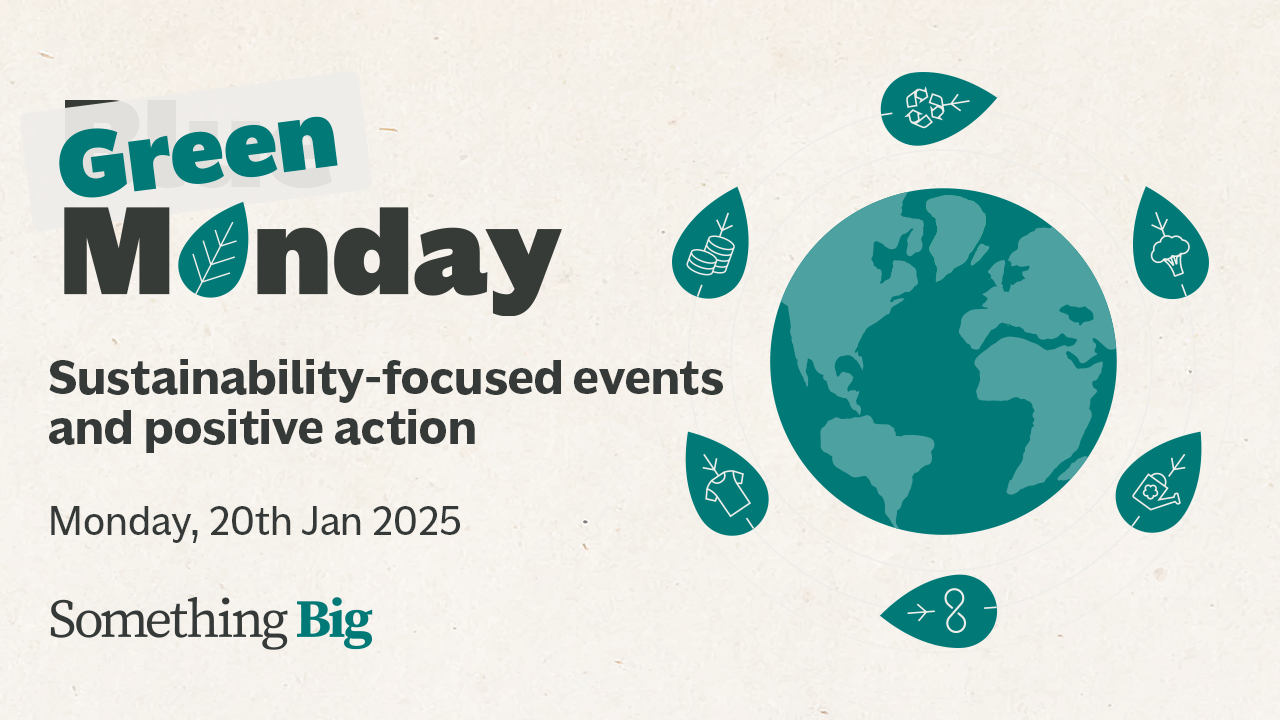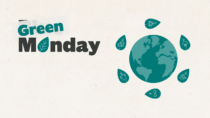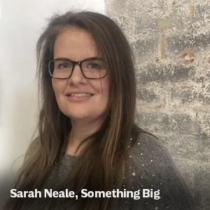2025 Workforce Trends Every Communicator Needs to Know
By Sally Pritchett
CEO
What does 2025 have in store for the workplace - and how can effective, inclusive communication help navigate the challenges ahead?
What does 2025 have in store for the workplace - and how can effective, inclusive communication help navigate the challenges ahead?
We’ve reviewed insights from leading organisations, including Great Place to Work, Top Employer, Make Work Better, Gallup, Mercer, and more. We’ve identified the six key trends shaping workplace culture, and how communicators can play a pivotal role in supporting these trends.
1. Changing workforce demographics
As the workforce spans more generations than ever, the growing generational gap could lead to intergenerational tensions.
How communicators can help:
Earlier in the year we explored the communications challenges that can cause friction between different generations. Check out our practical guides on unravelling ageism, improving collaboration between generations, shifts in language, channels and communications format and hear from experts on how the multigenerational workforce can be united.
2. Creating Neuroinclusive workplaces
With greater awareness of neurodiversity, organisations are recognising the value of different ways of thinking. To unlock this potential, workplaces need to become more neuroinclusive.
How communicators can help:
Explore how to create neuroinclusive work environments or sign up to this event on the 10 January with Autism Unlimited, to learn practical steps and strategies to foster a neuroinclusive workplace culture.
3. Adapting to evolving technology
While technology promises greater efficiency, it also risks overwhelming employees if not managed carefully. Adding new communication channels without retiring outdated ones can lead to digital overload.
How communicators can help:
Discover how to identify and address communication overload in your organisation. Read this article for practical fixes and insights into improving digital body language for more meaningful, productive interactions.
4. Focusing on sustainability and ESG
The climate crisis demands urgent action, and organisations need to actively engage employees in their sustainability and ESG efforts. There’s no room for “climate fatigue.”
How communicators can help:
In this research, we discovered how different generations talk about climate and sustainability so that we engage employees and create a culture of sustainability.
To carry on the conversation in 2025, join our Green Monday sessions to hear from sustainability and comms leaders on how they are engaging their communities.
5. Strengthening belonging and inclusion
Everyone deserves to feel safe, included, and free to be themselves at work. Accessibility plays a vital role in creating an inclusive environment where everyone can fully engage and contribute.
While progress in DEIB (Diversity, Equity, Inclusion, and Belonging) has accelerated, there’s still much work to do – especially as rising workplace loneliness highlights the gaps in creating truly connected and supportive cultures. Accessible communication can help to ensure no one is left out, fostering a sense of belonging that goes beyond physical and digital barriers.
How communicators can help:
For communications to be impactful and inclusive, they must also be accessible. Give everyone the same access to your comms with our practical advice on levelling up accessibility in your communications
6. Prioritising health & Wellbeing
Declining employee wellbeing continues to raise alarm bells – from burnout and mental health challenges to rising cancer rates and reduced physical activity.
How communicators can help:
Take the first step in building a culture of wellbeing. Read our guide for practical strategies, or explore how to support employees living with cancer.
As we approach 2025, fostering a workplace culture that is healthy, safe, and inclusive has never been more critical. If you’re looking for expert support to develop internal communications strategies that engage and empower your workforce, we’re here to help.
B Corp insights: Delivering and scaling impact
By Sally Pritchett
CEO
Discover actionable insights from purpose-driven leaders on how to drive culture, foster collaboration, and scale impact.
Discover actionable insights from purpose-driven leaders on how to drive culture, foster collaboration, and scale impact.
B Local Surrey is a network run by local B Corps, fostering a community of purpose-driven businesses and individuals committed to building a better world. It brings together certified B Corps and those aspiring to join the movement through networking and information-sharing events, empowering businesses to grow their impact.
At the newly B Corp-certified Denbies Wine Estate, this vibrant community gathered for an inspiring conversation on scaling up and doing business better. A quick show of hands revealed a diverse audience – seasoned B Corps, newly certified businesses, and those curious about joining the movement.
The keynote speakers, Anuradha Chugh, former CEO of Pukka and B Lab UK Board Member, and Douglas Lamont, CEO of Tony’s Chocolonely and former CEO of Innocent, shared powerful stories of leading purpose-driven brands.
Putting purpose at the heart of business
Anuradha spoke passionately about building a culture that sustains purpose through growth, challenges, and change. She likened it to being a farmer – constantly tending, listening, and nurturing the culture of the business to ensure values are deeply rooted. Her reflections on how purpose, culture, and courage intersect were a reminder that real solutions often emerge from within, empowering teams to lead the way.
Douglas took us on a journey into Tony’s Chocolonely’s mission to eradicate exploitation in the cocoa industry. He reminded us that being mission-first isn’t just a business strategy; it’s a way to drive systemic change. Through innovation, like sharing their open supply chain, Tony’s Chocolonely exemplifies how a purpose-led model can be both impactful and profitable.
Showcasing local B Corps
Members from of our Surrey B Corp community also shared their inspiring stories. Tad Ostrowski from Artington Legal explored the balance between time, cost, and quality, emphasising how aligning your values with how you spend your time can maximize your impact.
Kate Gibson of Gibson Games reflected on her family business’s 100-year legacy of creating joy and connection, sharing that consistent, everyday actions toward positive change are often what drives the greatest impact.
Dan Webber from Chimney Fire Coffee shared how they build equitable supply chains through long-term farmer partnerships. By staying true to the business’s founding mission of fairness and sustainability, they’ve maintained their values while growing the business.
Finally, Matthew Wood from Millwood addressed wellbeing in the construction industry, a field known for its challenges. He discussed how even small efforts – like trying to do just 1% more – can lead to significant and transformative changes.
Key insights for driving and scaling impact
Here are some standout takeaways from the event speakers on scaling impact effectively:
- Drive culture: A mission-led culture attracts top talent and motivates teams to achieve extraordinary results. It creates a positive cycle: purpose draws in exceptional people, who drive success and amplify impact, which in turn attracts even more talent. Culture is the foundation of impact.
- Collaborate for solutions: Form coalitions and explore partnerships, even with competitors, to address shared challenges. Movements like B Local Surrey demonstrate the power of collective effort and knowledge sharing.
- Aim to inspire others: Look for solutions that are clear, simple, and easy to replicate that can scale beyond your business or the B Corp movement. By empowering others to adopt your approach, you amplify your impact.
- Have patience: Change rarely follows a straight path – it ebbs and flows like the tide. With persistence and purpose, even small steps build momentum over time.
- Bring joy to your mission: People respond to connection and positivity, not lectures. Communicating your purpose in an engaging, relatable way encourages action and builds understanding.
- Sign the Better Business Act: Commit to driving change at a systemic level by supporting initiatives like the Better Business Act, which aims to ensure all businesses prioritise people and the planet alongside profit.
These are undeniably challenging economic and globally turbulent times, testing the resolve and potential of purpose-driven businesses. But staying transparent and honest – both with your team, customers, suppliers and wider community – is vital. Sometimes, protecting your mission may mean making tough decisions, like scaling back projects that don’t fully align with your impact goals. What matters is staying true to your values, making a difference where you can, and being upfront about the challenges along the way.
What’s next?
For more opportunities to connect and collaborate, join the B Local Surrey LinkedIn group. Plans are already underway for the next B Corp Month event in March.
And for another dose of inspiration, save the date for Green Monday on 20 January 2025, where we’ll transform Blue Monday into a day of sustainability and optimism. Packed with networking sessions and thought-provoking panels, this event is designed to inspire action. Find out more.
Big Difference: £20K pro bono support for fairer, healthier, happier workforces
By Sally Pritchett
CEO
Creating a big impact for fairer, healthier, and happier workplaces.
As part of our mission to create fairer, healthier, and happier workplaces, we are excited to launch our new programme, Big Difference. In 2025, we will support one UK charity or not-for-profit by providing £20,000 worth of pro bono strategic, creative, and communications expertise to a successful applicant.
For more details, please see our entry criteria below and don’t miss this great opportunity to tap into expert support.
Entries are open now and close on 31st January 2025.
Programme details and application guidelines
We are seeking a UK-based not-for-profit organisation or charity to receive pro bono creative communications support.
Campaign Objective:
All applicants must have a campaign with one or more of the following objectives:
- Workplace Fairness: Promote equitable practices and eliminate discrimination within workplaces.
- Workplace Health: Improve employee wellbeing and mental health.
- Workplace Happiness: Foster positive work environments and employee satisfaction.
Eligibility:
- UK-Based not-for-profit: Applicants must be a registered charity or non-profit organisation operating within the United Kingdom. Open to both regional and national organisations (operating region does not need to be limited to the Surrey / South East base of Something Big).
- Campaign Focus: The proposed campaign must align with the stated objectives of workplace fairness, health, or happiness.
Campaign Scope:
The budget the campaign will be £20,000 plus VAT, and will sit within the following scope:
- Creative Strategy: Development of a comprehensive campaign strategy, with the objective of making workplaces fairer, healthier and/or happier.
- Design and Copywriting: Creation of all necessary design assets and written materials.
- Campaign Management: Oversight and execution of the campaign.
Timeline:
- Entry Period: December 2024 – 31 January 2025
- Winner Announcement: 28 February 2025
- Campaign Launch: March – September 2025
Terms and Conditions:
- Intellectual Property: Campaign intellectual property will remain with Something Big.
- Out of scope: No external costs including paid media placement, printed materials or skills out of the scope of the Something Big team are included.
- Awards Submissions: Something Big reserves the right to enter the campaign into relevant awards.
- Pro Bono Value: The maximum value of the pro bono work will not exceed £20,000+VAT.
- No Entry Fee: There is no cost to submit an application.
- Selection Process: Applicants will first be shortlisted based on the selection criteria outlined below. Those who meet the criteria will then be voted on by Something Big employees. After the vote, a final small shortlist will be created, and the selected applicants will proceed to the interview stage to determine the winning applicant.
Selection Criteria:
- Campaign Impact: The potential for the campaign to make a meaningful difference in improving workplace culture.
- Alignment with Objectives: The extent to which the campaign aligns with the stated objectives of workplace fairness, health, or happiness.
How to Apply: Complete entry form.
If you have any questions, get in touch.
Green Monday: a day of sustainability-focused events
By Sally Pritchett
CEO
Planning your next Green Monday? Find the latest line up and resources here.
Green Monday – the 20 January – is our antidote to the so-called ‘most depressing day of the year’. Blue Monday might focus on the post-holidays slump but we’re flipping the narrative – transforming it into a series of inspiring events dedicated to sustainability.
With workshops, panel discussions, and networking opportunities, Green Monday is your chance to connect with like-minded professionals, share ideas, and gain practical tools to drive meaningful change.
Explore the full schedule below and join us in making a positive impact – for your business, your communities, and our planet.
NetWalk
Time: 8am-10am GMT, Mon 20 Jan 2025
Tannery Studios, Tannery Lane Send, Woking Surrey, GU23 7EF
Kick off Green Monday with a refreshing NetWalking session in the scenic Surrey countryside, connecting with sustainability professionals to share insights on 2024 progress, challenges, and ambitions for 2025.
Led by our CEO, Sally Pritchett, and Ali Fisher from Plans With Purpose, we’ll explore how communication drives sustainable progress before returning to the Something Big office for a warm drink and continued conversation. Rain or shine, boots or wellies are a must!
Breaking down the 3 big obstacles in business change – and how communications can help
Time: 11am-12pm GMT, Mon 20 Jan 2025
Online, Teams
What makes change so challenging, and how can communications help smooth the path? In this interactive session, we’ll uncover three common obstacles businesses face when driving change and explore how communications can address them. Led by our Nicky Leach from The Spiral Hub and our CEO, Sally Pritchett you’ll gain strategic insights, practical tools, and real-time exercises to sustain momentum and keep your team engaged through the ups and downs of meaningful change.
Sustainability Speed Dating
Time: 1pm-2pm GMT, Mon 20 Jan 2025
Online
Being the driving force for change can feel isolating. As a sustainability manager, you’re navigating resistance, balancing pressures, and pushing for innovation – often solo.
This Green Monday, connect with others who share your passion. Join us for an energising virtual networking session to exchange experiences, share strategies, and build valuable connections.
A big thank you to our hosts Standing on Giants.
Bringing your community on the sustainability journey
Time: 2.30pm-4pm GMT, Mon 20 Jan 2025
Online, Teams
How can you authentically connect with employees, customers, investors, and communities on your sustainability journey? What does it take to communicate ESG efforts with clarity and build trust among stakeholders?
For this panel discussion we will be joined by:
- Andrew Richmond, UK Communications Manager, Cemex
- Manoella Wilbaut, Board Member and President, Oxfam
- Jess Fielder, Global Head of Marketing, CDP
Together, they’ll share insights on crafting confident, impactful messages that resonate, inspire trust, and drive meaningful action. Perfect for sustainability managers, communications professionals, and business leaders looking to align and engage their communities effectively.
Creating clear and credible corporate reports
Time: 4.30pm-5pm GMT, Mon 20 Jan 2025
Online, Teams
How can businesses share their progress in a way that’s transparent, accessible, and impactful?
In this 30-minute session, we’ll explore how great corporate reports build trust and drive progress. You’ll gain practical tips to structure clear, engaging reports, avoid pitfalls like greenwashing, and use inclusive design to reach your audience effectively.
Ideal for sustainability managers, corporate communicators, and business leaders looking to inspire trust and action.
How can we support employees living with cancer?
By Sally Pritchett
CEO
Find out how compassionate communications can help employees working with cancer to feel truly supported.
Find out how compassionate communications can help employees working with cancer to feel truly supported.
One in two people will face a cancer diagnosis in their lifetime. This means cancer is likely to impact us all at some point – whether we receive a diagnosis or know someone facing cancer.
In the UK alone, 890,000 working-age people are living with cancer, and around 700,000 are balancing work while caring for a loved one with the disease. However, half of those living with cancer are afraid to tell their employers and over a third feel isolated at work during their cancer journey.
At such a difficult time, people should feel supported by their employers and colleagues – not afraid to share their diagnosis and left feeling like they aren’t receiving the support and flexibility they need.
Joined by Lindsay Bridges, Global Head of HR at DHL Supply Chain and Anna Dunn, Associate at Working With Cancer, our CEO, Sally Pritchett, started an honest and insightful conversation about how we can better support employees living with cancer.
What common challenges do those living with cancer face in the workplace?
One of the biggest challenges around cancer is the misunderstanding it creates, both for the person facing it and their employer. Until someone experiences diagnosis and treatment, it’s hard to know what recovery will be like. Cancer recovery isn’t linear – everyone responds in their own way and with different emotions. Understanding this can help create a more supportive and empathetic environment for those going through diagnosis, treatment and recovery.
What can employers do to better support employees facing cancer?
Understand that everyone’s situation is different
Cancer recovery isn’t the same for everyone. People with similar diagnoses can still experience very different emotions, treatments and challenges. This makes having a standard ‘one-size-fits-all’ policy difficult.
While it’s important to have a workplace policy, employers should also guide colleagues on who they can talk to and what processes are in place, and provide flexibility to meet each individual’s needs. Offering a clear, open line of communication can help reduce stress and create a supportive environment during an already challenging time.
Give your managers clear guidance
Equip line managers with the tools and information they need to confidently support team members facing a cancer diagnosis. Clarify what support your company provides, let them know their role in supporting the employee (versus the responsibilities of HR) and provide helpful resources. This not only ensures employees receive the support they need, but also helps them feel less like a burden, knowing managers are prepared to offer the right support.
Consider creating a guide for managers or running training sessions to help line managers within your company feel more confident handling these sensitive situations.
Support employees with their return to work
After cancer treatment ends, many people face a new set of emotions – loss of identity, a lack of confidence and fear of recurrence. While they may want to return to normality, navigating these feelings can be tough, and added pressure from employers can make it harder. Compassion and open communication are key during the return-to-work period.
When discussing an employee’s return to work, it’s important to ask how they’re feeling and what feels right for them. Let them lead the conversation so they can be honest about what feels right for them. Just like treatment, the post-treatment phase is not the same for all. A phased return to work period of at least 12 weeks can help employees ease themselves back into work and rebuild their routine without feeling overworked or overwhelmed.
How can employees better support their colleagues who are facing cancer?
Give people control
When someone is facing cancer, they may feel a loss of control. Asking how they’d like to discuss their diagnosis and treatment – or if they want to talk about it at all – can help them regain some control by setting their own boundaries. It’s important to respect their wishes and follow their lead on how open they want to be.
This conversation should continue after treatment too, so you can continue supporting them in the right way for them. Asking simple questions like “How’s your health?” allows someone to choose how much they want to share and whether they want to discuss their cancer moving forward.
Treat your colleagues as you normally would
Cancer doesn’t define a person, and many may not want to be seen only through that lens. Treat your colleagues as you normally would, while being mindful of their needs and how they’ve said they’d like to talk about their cancer.
A quick call or message to check in can mean a lot, but remember – there’s more to their life than cancer. Keep conversations balanced, acknowledging their interests and experiences beyond their diagnosis, so they continue to feel recognised for who they are beyond their diagnosis.
Think about what you say
It’s normal to feel unsure about what to say to someone facing cancer. A simple acknowledgement, like ‘I don’t know what to say, I’m sorry,’ can be enough. Avoid making assumptions about their journey or suggesting treatments, as everyone’s experience is unique.
Let the language that they use guide you – some people may feel empowered by using language like ‘battling’ or ‘fighting’ cancer, while others might prefer to say they are ‘living with cancer’. Respect their chosen language and be sure to support them in a way that feels right for them.
Advice for colleagues and employers who want to better support those living with cancer
There are lots of amazing resources available to help you better support someone living and working with cancer. Charities like Macmillan offer online communities and advice specifically for those supporting a loved one, friend or colleague through their cancer journey. Organisations like Working With Cancer can help employers and employees, employers to manage cancer and work.
For employers, offering training about cancer recovery can help teams better understand what someone may be experiencing. This awareness helps them offer more compassionate and informed support, creating a more understanding, supportive and empathetic work environment for everyone involved.
If you want to make your workplace fairer, healthier and happier by better supporting your employees living with cancer, we can help. Get in touch to find out how we can help you educate your workforce and create a culture of care and support.
Tune in: Supporting employees living with cancer
Employee Wellbeing Calendar 2025
By Sally Pritchett
CEO
Looking for the latest version? Get the Employee Wellbeing 2026 Calendar here.
Stay committed to your employees’ health and wellbeing in 2025 with our free downloadable calendar that highlights key health and wellbeing dates and events.
Why Employee Wellbeing Matters
Engaging your employees and delivering important health and wellbeing communications is an ongoing process that requires consistent attention throughout the year. Recent statistics reveal a concerning trend: global workplace wellbeing is declining, with a staggering 78% of employees reporting that work stress has negatively impacted their physical health.The role of employers in addressing this issue is increasingly clear and crucial. A overwhelming 93% of employees believe their employer is responsible for helping them manage their mental health.
Encouragingly, 89% of employees report that their company’s leaders openly discuss their own mental health, indicating that discussions around wellbeing in the workplace are becoming more commonplace and expected. This shift highlights the growing importance of prioritising employee wellbeing as an integral part of organisational culture and strategy.
How Can Our Calendar Help You?
- Comprehensive Planning: Helps you plan your employee wellbeing programmes for 2025.
- Key Dates: Includes important health and wellbeing celebration and awareness dates throughout the year to keep your business on track.
- Conversation Starters: Provides top tips for initiating important discussions about health and wellbeing with your employees, encouraging healthier behaviors and breaking down stigmas.
If you find this calendar useful, then check out our Diversity and Inclusion Calendar and Sustainability and Environmental Awareness Calendar.
If you’re looking for a partner to help you roll out your employee health and wellbeing programmes, we’d love to hear from you.
Download our Employee Wellbeing calendar
Sustainability and Environmental Awareness Calendar 2025
By Sally Pritchett
CEO
Download your free Sustainability and Environmental Awareness Days Calendar for 2025.
Our free Sustainability and Environmental Awareness Calendar can help you plan your activities for 2025, featuring key awareness dates and events that drive positive change.
Keeping sustainability high on your communications agenda is essential for talent acquisition and employee retention. ESG and planetary responsibility are crucial topics for your employees, with 68.6% of those choosing an employer stating that environmental policies and practices are important, and 65.5% indicating these policies influence their decision to stay with an employer.
Why You Need a Sustainability and Environmental Awareness Calendar in 2025
- Focus Your Sustainability Communications: Utilise awareness and celebration days throughout the year to guide your sustainability efforts.
- Raise the Profile of Your Green Activities: Highlight opportunities to engage in meaningful conversations about sustainability.
- Make the Most of Key Awareness Dates: Our top tips can help you to make the most of these events and engage your employees with the important work of protecting our planet.
If you find this calendar useful, then check out our Diversity and Inclusion Calendar and Employee Health and Wellbeing Calendar.
At Something Big we’re passionate about helping businesses raise the profile of their sustainability activity. If you’re looking to make a difference to the planet and need some help rolling out your sustainability and environmental awareness programmes, talk to us. We’d love to help.
Need help communicating your sustainability message? Download our free guide for clear, practical tips to build confidence in your comms. Get the guide →
Download our Sustainability and Environmental Awareness calendar
Brand bravery – find your fit: Three levels of bravery and how they can elevate your brand

By Hannah Wright, Senior Creative
Who doesn’t want to be brave? Hannah Wright, Senior Creative, explores the concept of brand bravery.
Who doesn’t want to be brave? Hannah Wright, Senior Creative, explores the concept of brand bravery.
When we think of being brave, we largely think of this as being a positive thing. I mean
who doesn’t want to be brave?! We’ve grown up consuming endless stories of courageous characters coming to the rescue of those most in need and saving the day. Hurrah! (See: Masters of the Universe).
And then we enter the world of adulting and work and the bravery thing continues to be threaded neatly through everything we do and expect of ourselves. And our brand.
But what is bravery exactly?
Let’s start by taking a look at the dictionary definition:
‘To meet or face (danger) with courage; to encounter, defy.’
Okay. So superheroes. Swords. Strength. Power-poses. Courageous catchphrases and capes.
But when it comes to branding, not all heroes wear capes! (sadly) Here’s how we might break down the definition for the business world. Brand bravery is:
- Standing up for what you believe in
- Not being afraid to rock the boat
- Having opinions on difficult topics
- Meaningful action which supports your words
- Honesty, vulnerability, humanness
- Being your true self
And why would you want to be brave with your brand?
Bravery helps clearly define who you are as a brand. It’s walking your walk. It solidifies your purpose and helps you find your people (your audience/clients/customers/network) who will ultimately help you achieve your end goal. It gives people something to grab onto – something to remember you by and something to hang their loyalty hat on. Essentially, it’s your defining difference and it proves your commitment to achieving whatever it is you’ve set out to do.
But like most things in this life, brand bravery is a (very) sliding scale.
At the one end, you’ve got your ‘low’ level brand bravery. But don’t be fooled into thinking ‘low’ is a bad thing (more on that later). Here’s what this may look like.
Low-level bravery
Think Ben and Jerry’s. Oddballs. Riverford Organic Farms. That kind of thing.
These (great) brands know what they stand for. And they’re not afraid to shout about it or to stand out in their industry. But the delivery – vocal and visual – is quite often on the cheeky or playful side of things. They’ll grab your attention with their bold, fun visuals – be that playful words or unusual imagery – and they’ve got opinions and personality. But it’s enjoyable for the end user. It’s palatable but effective.
Taking a step up from this cheeky approach is what we might call mid-level brand bravery.
Mid-level bravery
In this category, we have brands such as Patagonia, Lush, Dove, Who Gives a Crap. Brands across multiple industries but who all tip over into this next level of bravery.
These brands quite often retain some of that cheekiness from the lower levels but there’s a much higher degree of confidence when speaking their mind. They can be direct, humorous, and just a bit ‘different’. It’s engaging stuff and quite often has an inspirational edge which can tap into our own craving for bravery (cravery?).
On the visual side of things, their comms are just a bit more ‘edgy’. Euphemistic. Unusual. Unexpected. They’re likely to grab your attention but more for their minimalistic approach. Less is more. They say and show only what is needed to draw you in and pack a punch.
When we witness brands like this, we often feel empowered by their ability to show courage in tackling real-world problems. We’re unlikely to feel hugely uncomfortable on the receiving end of their comms but we get a real sense of what’s ‘wrong’ – be it a political, social or environmental issue – and we see how these brands are doing their bit to right these wrongs.
At then at the latter end of our scale, we have high-level bravery.
High-level bravery
There are no two ways about it, brands within these categories can quite often leave us feeling challenged. Shocked. Uncomfortable, even. But all for the right reasons. And we don’t love these brands any less for making us feel this way. In fact, comms within these categories show some of the highest levels of engagement and success (I think we all remember the ‘Hit me at 30mph’ campaign from the UK Government, right?!).
In this category, we have organisations such as Greenpeace, Sea Shepherd, BrewDog and Bodyform. They show and tell us things which stop us in our tracks. Seals suffocated by plastic bags. Blood and gore. Harrowing facts. And forthright opinions on global topics. They call out other brands, world leaders and quite often, us. They challenge the status quo, they make us sit up and listen, and really get us thinking about things we might not even realise we’ve come to accept or often ignore.
So how do you get it right?
Chances are, you’ll have mentally placed your brand within one of these three levels.
Or perhaps you’re straddling a couple of them. You might even start to think about other brands you like – or don’t like – and where they might sit within this scale.
Whether you’re starting out or have a brand that has celebrated many anniversaries, it’s important to get this right. Your brand is a delicate eco-system made up of your organisation, your products and services, your people and your customers. It’s the bridge to your clients and customers which needs to be strong and dependable.
Step one is defining your ‘you’
What is it your organization cares about? Why do you exist? What do you hope to achieve one day or carry on achieving? You’ll likely have this stuff mapped out but it’s good to revisit this as things can sometimes go astray.
Then assess your current comms
Are they telling the story of ‘you’? If so, how?
If not, why? How brave are they compared to others in your arena? Which brands mirror the kind of comms you want to be putting out there? How could your comms be braver? What might that look like?
Have a think about your audience or client base
What do they expect of you? What do they like and/or believe in? What’s their level of bravery? Are your current audience even the audience you want to have?
Trust your gut
Which one of these levels felt like ‘you’? (or who you’d like to be as a brand). What feels appropriate for achieving your vision?
The wrap-up
It can often feel like being the most brave is the right thing to do. It taps into our inner She-Ras and He-Men (YOU’LL NEVER DEFEAT US, SKELETOR). But when it comes to your brand, this is rarely the case. It has to be appropriate for you, your audience and where you are in your journey.
If one day you’re all Comic Sans and pastel tones and the next you’re using expletives and calling out politicians, that ain’t right. Gently, gently. Pin your end goal to the wall and look at it daily but take those baby steps. And be sure to take your audience – old and new – on the journey with you. Warm them up. And every day just take things a little further towards that end goal – be that evolving your tone of voice, strengthening your colour palette or finally getting around to replacing your stock imagery with real photos of your people.
Remember – brands are essentially just people (more on that another day!). If you’re showing up in a way that feels authentic, it’ll be easier to create meaningful communications that truly resonate with your ideal audience. If you’re not quite there yet, it’s possible you might have some followers who just aren’t your tribe. As you grow your brand into what you want it to be, you’ll likely lose some of these followers along the way – and that’s perfectly fine. Because the others who show up are going to be far more engaged, and will ultimately help you get to where you’re going.
So unless you’re an entirely new brand, this is somewhat of a long game. It’ll happen but let’s not scare off your current audience with a complete personality change overnight.
Need a little help getting there?
At Something Big, we can help you find the right level of bravery for your brand and audience – whether you want to refresh your tone of voice or create a meaningful campaign that has a positive impact. Get in touch to find out how we can support you on your journey.
Diversity and Inclusion Calendar 2025
By Sally Pritchett
CEO
Looking for the latest version? Get the Diversity and Inclusion Calendar 2026 here.
Never miss an important date in 2025 with our free downloadable calendar that includes key diversity and inclusion awareness dates and events.
Nurturing a true sense of belonging among your employees can’t be a short-term objective – it’s an ongoing commitment to ensuring that everyone in your workforce feels heard, respected and valued. And with 65% of employees wanting to feel a strong sense of belonging at work, now is the time to ensure your business is aware of diversity and inclusion days that matter to your employees.
How can our calendar help you?
- Helps keep your diversity and inclusion employee engagement programmes on track.
- Includes a wide range of cultural, racial, religious, age, gender, sexual orientation and disability awareness dates.
- Top tips for opening up and developing important conversations to help you make the most of these events
If you find this calendar useful, then check out our Employee Health and Wellbeing Calendar and Sustainability and Environmental Awareness Calendar.
If you’re looking for support in rolling out your diversity and inclusion programmes, get in touch to see how we can help.
Download our Diversity and Inclusion calendar
How communication overload is slowing organisations down (and how to fix it)
By Sally Pritchett
CEO
Communication overload is slowing your organisation down. Learn practical tips to streamline messaging, reduce distractions, and boost productivity.
Communication overload is slowing your organisation down. Learn practical tips to streamline messaging, reduce distractions, and boost productivity.
As passionate communications experts we love communication….when it’s effective. The problem is too often we’re communicating too much and instead of helping it’s hindering.
We all know how it feels to be constantly swimming against the tide, trying to keep up with an ever-increasing avalanche of emails, notifications and messages, flicking between channels and getting distracted by notifications pinging on multiple devices around us. This constant influx of communication is forcing us to multitask, distracting our concentration, preventing us from getting into productive flow states, and preventing us from achieving important tasks.
Has hybrid working made this worse? Possibly. While very few people are missing the busy, noisy and distracting environments of the pre-pandemic open-plan office, today’s equivalent is perhaps the increased instant messaging platforms pinging away. Sure, we can turn off notifications, but it doesn’t stop our colleagues having questions.
On top of simply not harming productivity, this communications overload is also impacting mental wellbeing, stressing employees out when they feel they can’t keep up no matter how hard they try, and creating a sense of dread that they’re missing important messages and tasks that get buried in the noise.
As professional communicators driven by making a meaningful difference, we want to help the organisations around us. Here’s what we believe are the main culprits are along with our tips for reducing the communications overwhelm.
Too many channels
It’s great that technology blesses us with better channels all the time, but we must be careful to ensure that these new channels aren’t just adding to the noise. Part of the communications overwhelm is purely maintaining and checking so many difference channels.
Our tip: Be brave and don’t be afraid to close channels down.
From closing X and Facebook accounts to turning off internal channels like Yammer or WhatsApp. Question if another existing channel could serve the same purpose.
Poor use of channels
“Email as become a counter-productivity tool” Justin Rosentein, ex-Facebook and co-founder of Asana
If you’ve ever experienced a school parent WhatsApp group when a child loses its blazer, or have been part of a ‘Reply all’ email frenzy, you’ll appreciate how quickly poor communication can do its damage. Unfortunately, poor communications etiquette is common practice in organisations because it’s rare that anyone has been shown how to communicate better. Like leadership skills, there’s an assumption that subject matter experts automatically know how to communicate effectively.
Our tip: Provide effective communications guidance to employees
Help employees to choose the right channel, understand the anatomy of an effective piece of communication and how to use AI tools effectively.
Whilst email isn’t quite dead yet, it is time to reset the way we use it. Email should be limited to 1:2:1 conversation or used as an ‘inform’ broadcast channel only.
Too much collaboration
Yes, we did just say that. It’s obviously great to involve people, engaging stakeholders on the journey is critical to success, but that doesn’t mean cc’ing the whole company every time there’s an update or getting feedback at every stage.
Whether we blame modern matrix management, shifting leadership styles or anxiety over making decisions, there’s no doubt that organisational decision making is slowing down and getting more complex.
Our tip: Increase clarity where possible
Be clear on roles, responsibilities and RACI (Responsible, Accountable, Consulted, Informed). One of the most common reasons for looping in too many colleagues is not being sure who needs to know what, being clear on this can help reduce communications overwhelm.
Poor personal leadership
When we think leadership, we often look to the top of the organisation, but everyone can take responsibility for stepping up personal leadership within their roles and this extends to being concise and considerate in their communications.
Our tip: Empower champions
We can’t all absorb every topic all the time, divvying up projects, workstreams or topic themes provides a great way to funnel communications through individuals so they can filter and share updates when appropriate, reducing the constant overload.
‘Always on’ communications
With hybrid working came many flexibility benefits including a blurring of the general 9-5.30 workday, the challenge this brought for many is a culture of ‘always on’ communication which has added to the feeling of overwhelm.
Our tip: Set the ground rules around the ‘right to switch off’
While for some the ability to work outside of the usual workday helps flex around care responsibilities or other responsibilities, it can add pressure to colleagues to feel always available. Be clear on expectations and the ‘right to switch off’ and increase awareness of ‘send later’ features.
As passionate communicators with experience in supporting large organisations with employee engagement, we’re keen to make sure communication helps drive innovation, builds relationships and enhances productivity. If you think over communications is slowing your organisations down and aren’t sure where to start book a call with us here.



















